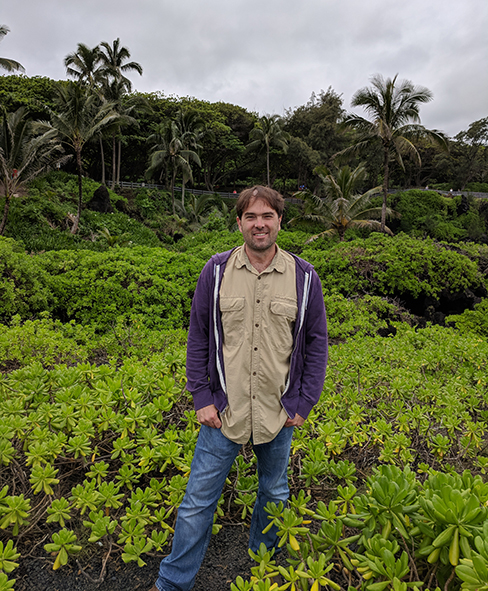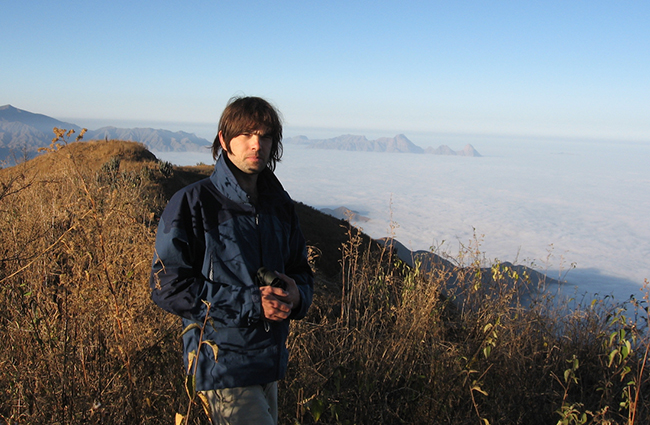BY TIM SCHOMMER
Barker Fariss has been appointed interim director of Colorado State University’s Center for Environmental Management of Military Lands, effective July 1, following the departure of current director Tony Chapa. Fariss joined CEMML as an assistant director in February.
Fariss has an extensive background in environmental regulatory compliance, making him an excellent fit for overseeing CEMML. The organization helps the Department of Defense meet its regulatory obligations for the immense natural and cultural resources found on military land. Fariss has overseen federal- and state-funded projects that require expertise in legislation such as the Native American Graves Protection and Repatriation Act (NAGPRA), the National Historic Preservation Act (NHPA), and the National Environmental Policy Act (NEPA). At CEMML, he also oversees projects supporting environmental regulatory policy for the Air Force and the Air National Guard.
Guiding CEMML Through Its Next Phase
At the request of A. Alonso Aguirre, dean of CSU’s Warner College of Natural Resources, Fariss will be taking the helm of CEMML at a pivotal point in its history. The organization has grown rapidly over the past several years and today brings in more than $100 million annually in research agreements and contracts, with more than 700 employees around the globe, mostly at military installations.
“I appointed Dr. Fariss as interim director to guide CEMML to the next phase of success,” Aguirre said. “His extensive background in leading federal, state, university, and corporate initiatives and his deep understanding of Indigenous science, environmental policy, and legislation provide a unique opportunity for CEMML.”
While Fariss sees the potential for CEMML to expand its reach in new areas, he also believes that the organization should maintain focus on the core environmental management projects that made CEMML what it is today.
“I think CEMML continues to have incredible expertise in helping shape and guide the way military lands are managed and to do things in a sustainable way,” he said. “Continuing to identify new areas for growth is great, but we have to ensure that our long-standing programs are reinforced and continue to prosper as well.”
A Wealth of Experience

Prior to joining CEMML, Fariss spent five years at infrastructure company AECOM, standing up their Office of Native Sovereign and Tribal Relations. He developed policies and procedures to help AECOM and its subcontractors improve their approaches in transportation design, facilities design, and environmental engineering. He worked on hundreds of projects involving Native American communities across the United States, setting new standards for industry-wide best practices. Embedding environmental, social, and governance principles into the work of the Office of Native Sovereign and Tribal Relations, Fariss ensured that AECOM and its clients worked in partnership with Indigenous communities to leave a positive and lasting impact on the environment. Some of Fariss’ projects included expanding Highway I-95 in Philadelphia; creating a land information management system for the Navajo Nation; improving an irrigation system in Maui, Hawai’i for the state’s Department of Agriculture; and helping with remediation planning for former defense sites under the U.S. Army Corps of Engineers in Hawai’i.
Prior to working at AECOM, Fariss was a lead state archaeologist in Hawai‘i. On Maui, he reviewed development permits, inventoried state properties, and ensured regulatory coordination with the State Historic Preservation Division. For the Maui/Lānaʻi Burial Council, he advised officials on lineal descendancy claims and the return of ancestors to their community of origin.
Fariss’ federal policy credentials were honed at the University of Massachusetts at Amherst, where he served as coordinator for the Native American Graves Protection and Repatriation Act. Fariss inventoried the university’s archaeological collections, as well as collections at partnering colleges and museums, and repatriated ancestral remains and sacred objects. He was a faculty member in the anthropology department and served as an advisor for students in the Native American and Indigenous Studies Certificate Program.
Before working at UMass, Fariss was the interim tribal historic preservation officer for the Osage Nation in Oklahoma. In that role, he oversaw regulatory compliance reviews, negotiated contracts and agreements with state and federal agencies, conducted cultural resource investigations, and managed the Osage Nation’s GIS database.
Educational Background & Early Career
Fariss holds a master’s degree and a Ph.D. in anthropology from the University of North Carolina at Chapel Hill. His doctoral dissertation involved analyzing over 300 archaeological sites to investigate the long-held notion that prior to the rise of the Inca Empire, northern Peru’s Moche Valley was beset with violent interactions between highland and coastal ethnic groups.

While the Moche came to be known for human sacrifice and brutal battle tactics, Fariss’ dissertation showed that Moche society, recognized as the first state-level society in the Americas, did not originate out of violent conflict. Instead, an early expansion of irrigated agriculture allowed for a more pluralistic society inspired by less competition over water, a key resource in the arid Andes Mountains. His analysis of settlement patterns and architectural styles found that the presence of certain building types and their configuration on the landscape were not indicative of conflict.
Fariss’ master’s thesis was also focused on the prehistory of the Moche Valley. He worked closely with local communities to help them identify and preserve archaeological sites. With his advisor, he created a nonprofit that still operates today. “Over time, the community members began to take ownership of the sites as their cultural heritage,” he said, “with many of the sites being established as parks and cultural sites protected by the state.”
From 2001 to 2003, he and his life partner lived in a highland Andean community, investigating the ecological sustainability of the Parque Nacional de Huascarán Biosphere Reserve, which had been recently designated as a World Heritage Site. The project focused on the changing nature of relationships between Indigenous communities and national and local government entities. It produced important data about how the park’s formation affected local social structures that influence how the park is managed even today.
Early in his career, Fariss worked as a research assistant at the Duke University Primate Center, Division of Fossil Primates. He curated fossil and sub-fossil primate specimens, managed collections, oversaw requests from researchers and museums, and helped present research at professional conferences. The more than 30,000 specimens housed there range from 500 to 55 million years old and originated in Egypt, India, Madagascar, and Wyoming.
The Search for a New Director
CEMML is now seeking a dynamic and seasoned director to lead its multi-disciplinary team of scientific and technical experts. The new director will advance CEMML’s long-range vision as it continues to support the military mission while contributing to conservation of the nation’s most biologically diverse and culturally rich federal lands. The search committee includes members from CEMML, the Warner College of Natural Resources, the Walter Scott, Jr. College of Engineering, and the Office of the Vice President for Research.
 Dr. Barker Fariss attends a trade show event. Photo courtesy of Dr. Fariss.
Dr. Barker Fariss attends a trade show event. Photo courtesy of Dr. Fariss.